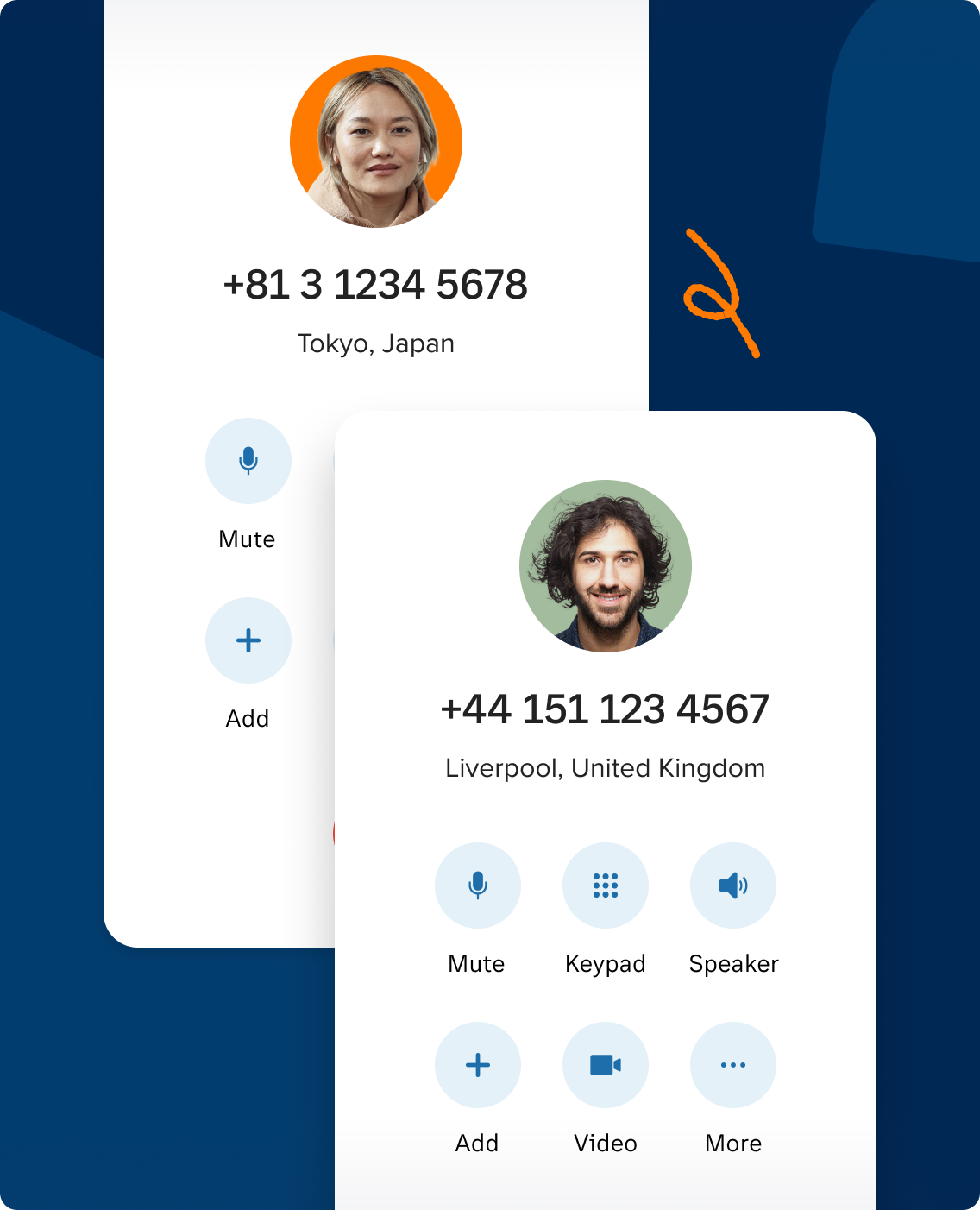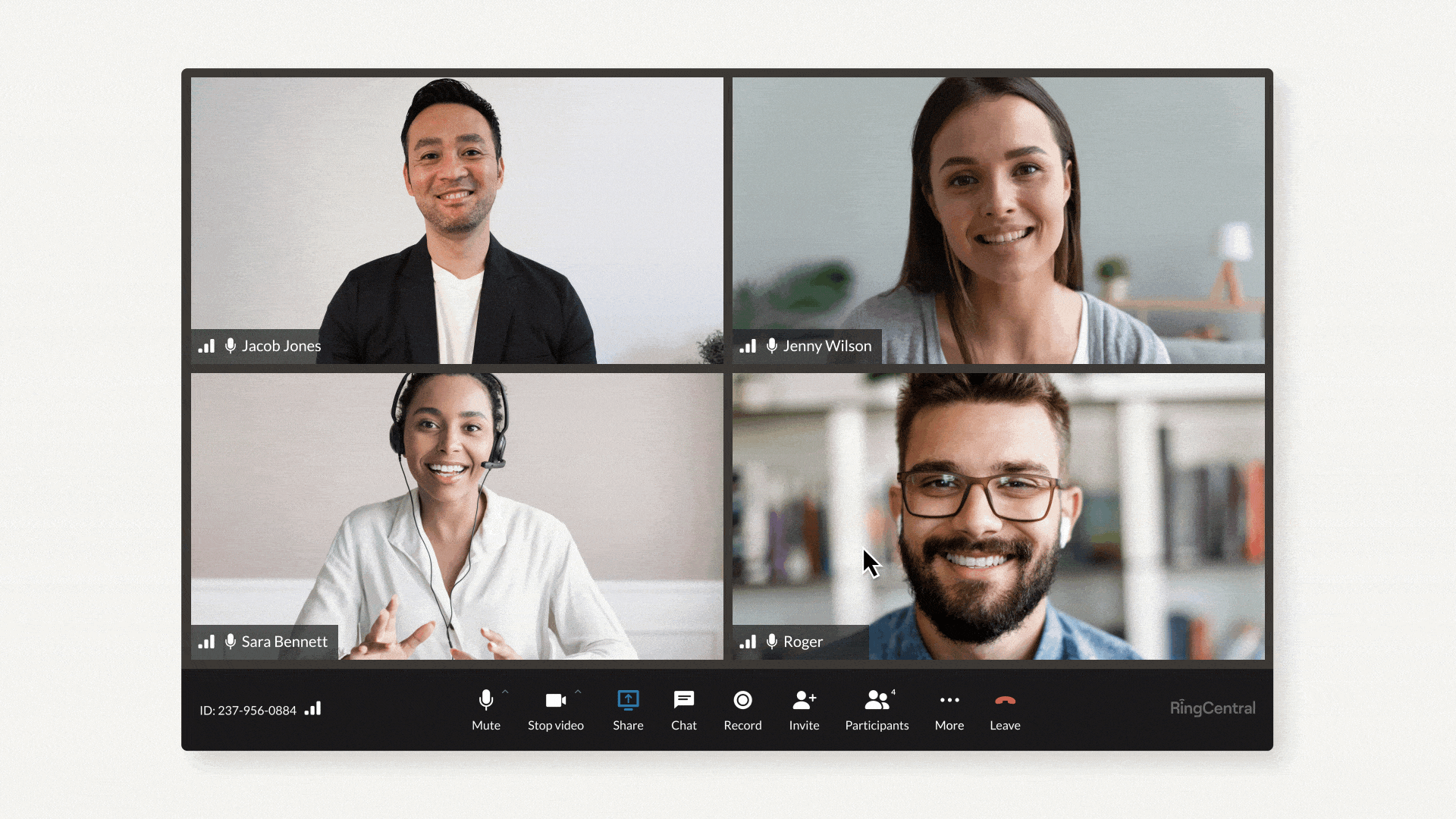I’m currently writing from my family’s home in Toronto, Canada, which is a far cry from my own home in Dublin, Ireland. At the same time, I report to a team that’s mostly based in the Bay Area. That’s an 8-hour time difference between myself, my leader, and many of my colleagues.
Learning to work with colleagues across time zones, cultures, and nationalities has been paramount to my role since day one. And it’s a hugely rewarding experience. Not only can I work across the entire spectrum of regions RingCentral covers, but I get to live where I’ve always wanted.

Here’s the secret to a successful hybrid and remote-first workplace.
That being said, working across a global team comes with its fair share of challenges—many of which companies are experiencing for the first time. You might run into frustrated colleagues, siloed workflows, and a lack of team spirit, just to name a few.
Introducing a few small changes to your global collaboration etiquette can help your teams across the world work together more effectively and build a stronger company culture. Trust us, we’ve tried these.
Here are a few ways we at RingCentral foster thoughtful global team collaboration across all the places, hours, and devices we work from.
1. A team calendar of global public holidays
When a company is too USA-centric, workers can easily fall into the trap of messaging colleagues during national holidays, subconsciously pressuring them to work through them. Ever received an urgent message or email on your day off?

For those with colleagues who reside in different countries, having an annual calendar that maps out all their national/public holidays ensures that everyone is aware and colleagues are given their much-deserved days off.
Bonus tip: Be aware of specific traditions in different countries and ask the employees there to introduce what they’re about. For example, Lunar New Year or Saint Patrick’s Day, which are both coming up.
2. Use digital tools to schedule around time zones
If you work internationally, you’ve probably received a calendar invite for a meeting scheduled for midnight. And for obvious reasons, you can’t attend that. But the back and forth of rescheduling and wasted time and productivity can be easily avoided.
When scheduling meetings, tools like Time Zone Converter can tell you what time it is based on your country of residence. Use this to determine the best time to schedule a meeting for everyone invited.
Bonus tip: If accommodating all time zones in a meeting is impossible, record the video meeting and share it via your team messaging app.
3. Adapt speaking styles
When you work with a global team, there will be colleagues whose first language isn’t English. That’s why speaking slower and explaining certain references and metaphors is always beneficial for everyone.

Bonus Tip: Use features like RingCentral Video’s live transcriptions, which automatically transcribes entire meeting voice conversations into written copy), and meetings summaries (recaps the entire meeting in an auto-generated short-form summary, complete with video highlight reel and keywords) so that folks can rewatch the meeting at their own pace.
4. Be mindful of the receiver of your message
When communicating across time zones, start your messages with, “At your earliest convenience” or “When you’re back online tomorrow.”
This makes it clear that you don’t expect them to respond the moment they receive the message—and that 24 hours is a fine turnaround time. You’ll have to balance this expectation as some cultures are more strict on 9-5 working hours compared to others that are more fluid.
Bonus tip: Nonverbal communication can be very different across cultures. For example, some people might feel comfortable voicing their opinions, whereas others might feel they need permission to share their thoughts.
Dedicate time at the end of meetings to ask various teams to voice their thoughts. This gives everyone on the team the opportunity to chime in.
5. Connect with video wherever possible
When you’re not physically present with your leaders, influential stakeholders, and colleagues, you might feel like you’re being overlooked. This is called proximity bias—and it’s a real concern.

To combat proximity bias, turn your video on whenever possible in a virtual meeting. Let your colleagues get to know your face, expressions, and personality digitally. This replicates the face-to-face interactions of the office that are essential to building great work relationships.
Bonus Tip: If your team’s budget allows, try to make a trip to your company’s HQ twice a year. Attend offsites and participate in team-building activities with your teammates and get to know them on a personal level.
6. Have a process for globalization in your enterprise
Create an etiquette guide that’s given to every employee across the company. This helps employees understand the different time zones teams operate in and the cultures that run throughout the business.
The guide could include simple tips like being aware of @ mentioning during after hours, or provide a list of employee resource groups so workers can get to know their colleagues in other teams and timezones.
Also consider a RACI matrix to give employees an understanding of who does what and how to best collaborate with other teams.
Bonus Tip: Use a task management tool to identify who’s responsible for each assignment and specify deadlines. This is especially helpful when a global team works together on a single project.
7. Understand how communication differs across cultures
Some cultures are more comfortable with confrontation, whereas others try to avoid it. Some cultures are rigid about their concept of time while others cultures are much more flexible about it. Some cultures don’t like to say “no” and will tell you anything but that.
Recognizing that your team comes from different cultures is the first step to work together effectively.
Bonus Tip: Check out The Culture Map by Erin Meyer. This illustrates why understanding the communication difference across cultures is so essential for every international business.

Of course, let’s not forget the easiest tip of all: be nice. A simple “good morning”, “how are you?”, or “have a great weekend” can mean a lot to your colleagues—and sets the tone for a great relationship.
Consider how you can implement these strategies if you have a global team. Even if your team is globally cohesive and the best of friends, there’s always something new to learn about effective cross-continental collaboration.
Originally published Jan 26, 2022
Looking For Startup Consultants ?
Call Pursho @ 0731-6725516
Telegram Group One Must Follow :
For Startups: https://t.me/daily_business_reads







